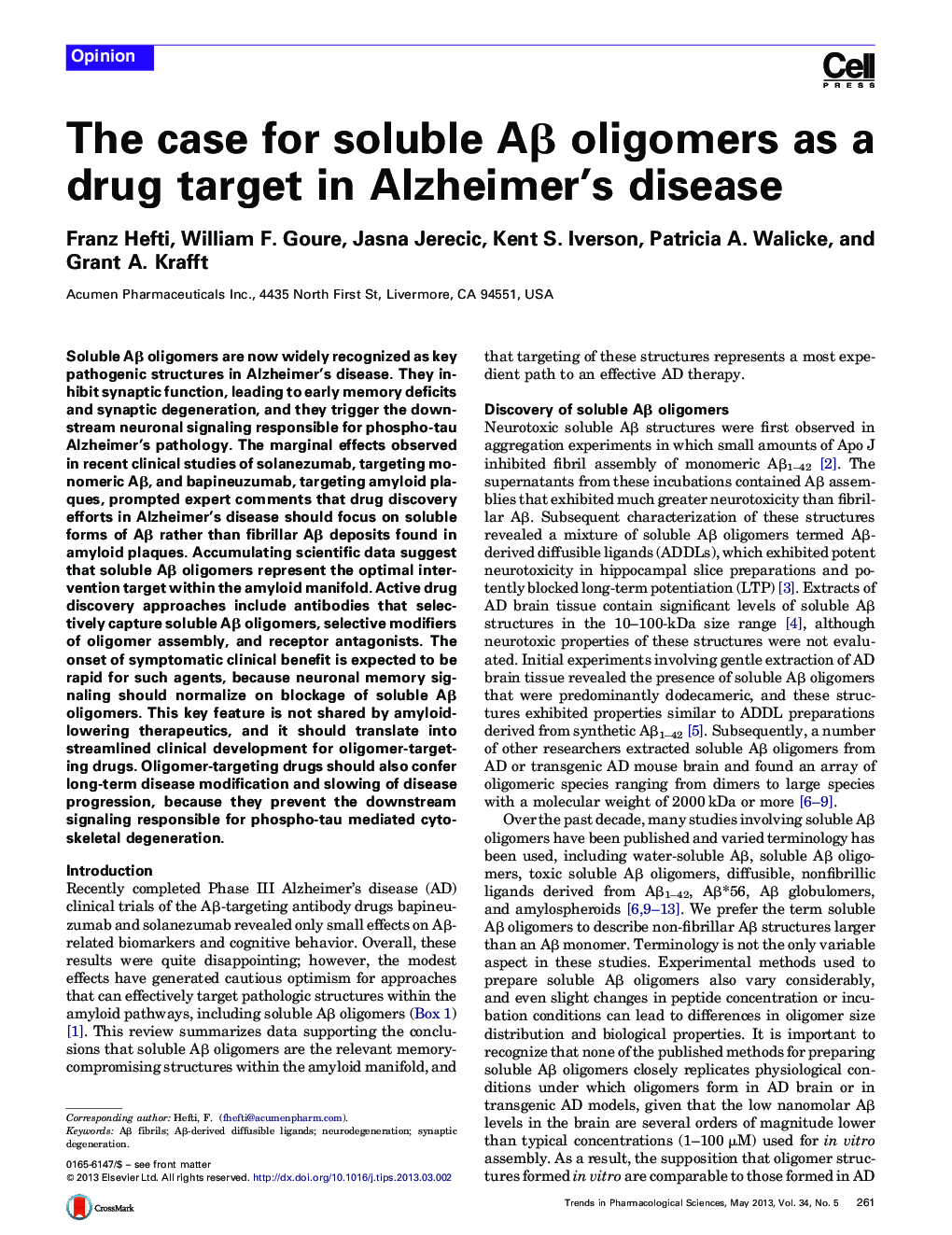| Article ID | Journal | Published Year | Pages | File Type |
|---|---|---|---|---|
| 2572695 | Trends in Pharmacological Sciences | 2013 | 6 Pages |
•Soluble Aβ oligomers are acutely synaptotoxic and contribute to tau pathology.•Confusing terminology and methodologies hamper the science of soluble Aβ oligomers.•There are promising drug discovery targets related to soluble Aβ oligomers.•Translational tools facilitate clinical proof of concept in short trials.
Soluble Aβ oligomers are now widely recognized as key pathogenic structures in Alzheimer's disease. They inhibit synaptic function, leading to early memory deficits and synaptic degeneration, and they trigger the downstream neuronal signaling responsible for phospho-tau Alzheimer's pathology. The marginal effects observed in recent clinical studies of solanezumab, targeting monomeric Aβ, and bapineuzumab, targeting amyloid plaques, prompted expert comments that drug discovery efforts in Alzheimer's disease should focus on soluble forms of Aβ rather than fibrillar Aβ deposits found in amyloid plaques. Accumulating scientific data suggest that soluble Aβ oligomers represent the optimal intervention target within the amyloid manifold. Active drug discovery approaches include antibodies that selectively capture soluble Aβ oligomers, selective modifiers of oligomer assembly, and receptor antagonists. The onset of symptomatic clinical benefit is expected to be rapid for such agents, because neuronal memory signaling should normalize on blockage of soluble Aβ oligomers. This key feature is not shared by amyloid-lowering therapeutics, and it should translate into streamlined clinical development for oligomer-targeting drugs. Oligomer-targeting drugs should also confer long-term disease modification and slowing of disease progression, because they prevent the downstream signaling responsible for phospho-tau mediated cytoskeletal degeneration.
